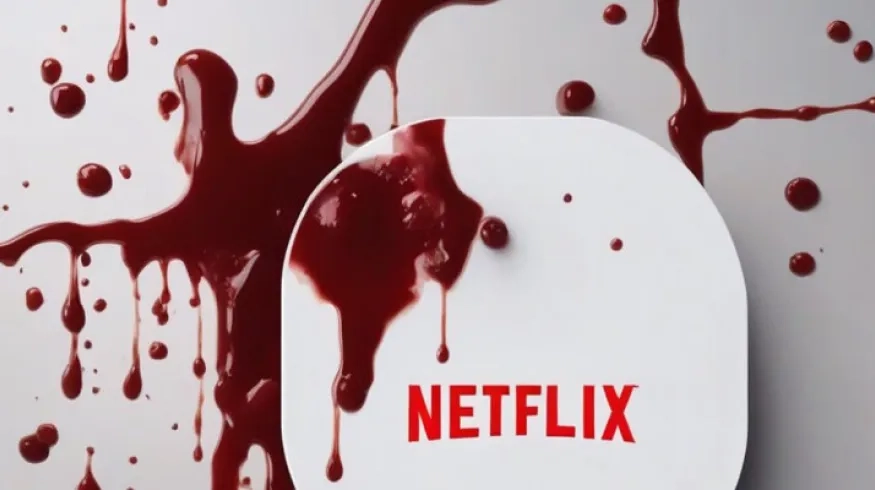
This Viral Netflix Scene Sparked an International Boycott
Panas Media – What started as a trending clip on TikTok has turned into a full-blown international controversy. A single scene from a viral Netflix original series just under two minutes long has sparked global outrage, furious online debates, and even an organized boycott that now spans several countries.
The backlash was swift, viral, and unforgiving. As the clip circulated on social media, critics from different cultural, political, and religious groups began calling out Netflix for what they saw as an intentional provocation. Has the line between creative freedom and cultural insensitivity been crossed?
What was in the scene? Why did it go so viral? And how did one moment lead to a digital uprising no streaming giant saw coming?
Welcome to the new age of streaming accountability, where one scene can change everything.
The series in question “Sanctum”, a high-budget dystopian drama released globally in early 2025 was already receiving strong buzz for its bold themes and striking cinematography. But in Episode 6, a scene showed a symbolic act of destruction involving a sacred cultural artifact, portrayed in a context many viewers considered deeply offensive and disrespectful.
Within hours of release, a short clip of the scene went viral on TikTok and X, garnering millions of views and tens of thousands of outraged comments. Influencers, commentators, and even government officials began weighing in. Hashtags like #CancelSanctum, #BoycottNetflix, and #RespectOurCulture began trending globally.
By the end of the day, major public figures from three different continents had issued formal condemnations and Netflix found itself at the center of a firestorm it could not contain.
Read More: Can’t Find Your Favorite Show? This Secret Digiturk Trick Works Every Time
The outrage wasn’t just about one object being destroyed. It was about the larger meaning attached to it. For many viewers, the scene felt like a calculated insult one they believed Netflix could have easily avoided with cultural consultants or basic editorial judgment.
In an era where representation matters more than ever, the line between artistic expression and cultural provocation has grown razor-thin. For some, this moment symbolized how global media platforms still treat sacred beliefs as dramatic props. For others, it was yet another example of Western content creators mishandling sacred imagery from marginalized cultures.
What made things worse? Netflix reportedly disabled comments on the show’s official pages, fueling even more anger and suspicion.
Within 48 hours, calls for a boycott weren’t just trending they were turning into action.
Activist groups in Southeast Asia, North Africa, and Latin America announced coordinated unsubscribing campaigns, urging viewers to cancel their Netflix accounts and switch to regional platforms. Some politicians joined in, with one high-profile lawmaker tweeting, “Our culture is not your script device.”
In Turkey and Indonesia, religious leaders issued public advisories against the series. A few advocacy groups even demanded that the episode be taken down entirely or re-edited.
Meanwhile, creative communities debated the implications: Was this censorship? Or necessary accountability?
At the time of this writing, Netflix has not issued a formal apology. A brief press statement noted the platform’s commitment to “creative diversity” and “support for bold storytelling.” But critics say the response fell flat more corporate than compassionate.
Insiders report that internal discussions are ongoing about whether to remove the episode in certain regions or issue a disclaimer. But the silence from Netflix’s top executives is only adding fuel to the fire.
One industry analyst told Panas Media, “In a world this sensitive and globally connected, content can’t live in a vacuum. What works as edgy drama in one country might be explosive in another.”
This is not the first time Netflix has come under fire for controversial content but this might be the most globally unified backlash yet.
It raises serious questions about the future of global streaming. As platforms try to create content for “everyone,” they must also learn to respect cultural boundaries without compromising artistic freedom.
We are living in a time when a single viral scene can bring together diverse communities under a common cause whether that’s protest, boycott, or cancelation.
It also demonstrates the power of short-form social media platforms like TikTok to amplify outrage and catalyze real-world action faster than ever before.
The boycott against Netflix sparked by one viral scene isn’t just about one show or one mistake. It’s about what people expect from media platforms today respect, awareness, and responsibility.
As streaming content becomes increasingly global, the stakes are higher than ever. Missteps that once faded quietly now explode in the algorithmic spotlight.
And as this controversy continues to unfold, one thing is clear: audiences are no longer just viewers they are watchdogs, curators, and enforcers of cultural standards.
Whether you see this moment as progress, overreaction, or something in between, the message has been received loud and clear: content creators no longer control the narrative culture does